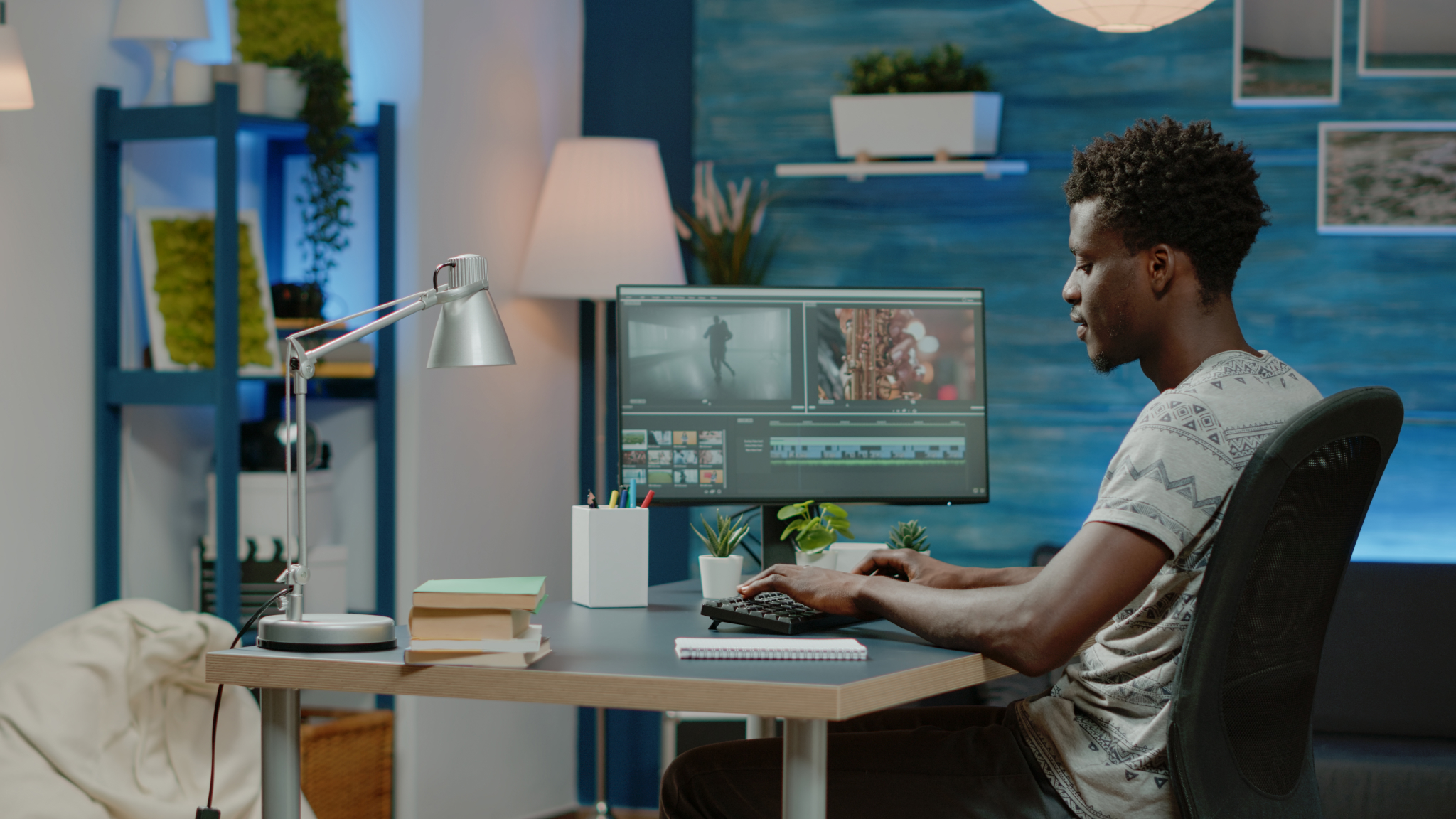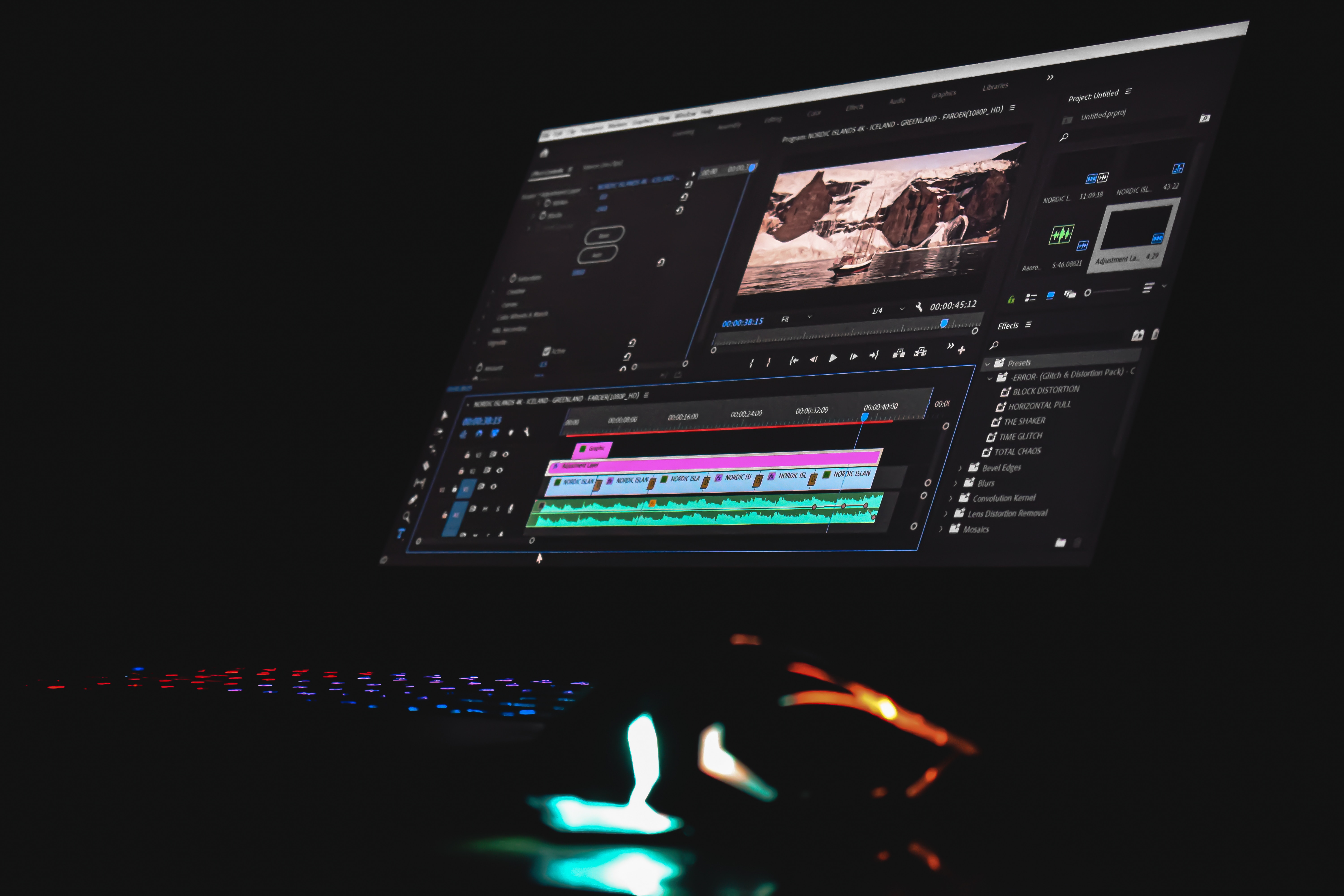Video editing is a detail-oriented process that often puts a high demand on your computer. Unlike standard browsers and programs, video editing software requires a lot of system memory and processing power, especially when working with larger files or complex timelines. Because of this, editors need to invest in reliable computers that meet the needs of their projects and goals — though many editors disagree on which computers are best.
When deciding between a Mac and a PC for video editing, it's critical to consider that not all models are identical. Different PCs and Macs often have unique performance speeds, image quality, and other important specs to consider.
Factors to be aware of include:
- Type of processor
- Operating system
- Hard disk size
- Computer memory size
- Integrated graphics
- Manufacturer
- Manufacturing date
- Years used
With these factors in mind, keep reading to learn the most significant differences between using a Mac vs. PC for video editing.
Mac for Video Editing
Video editing on a Mac is smooth, easy, and the preference of many creative professionals. However, Mac video editing may not be the best option for all projects due to their performance limitations.
Performance
Performance is one of the most crucial factors for video editors, especially if you use larger video files, are planning any VFX, or have a heavy video editing workflow. Apple prides itself on its product performance, demonstrated in its Mac computers and operating systems.
Rendering Speeds
Rendering speeds determine playback quality, how long your project takes to export, and, in some circumstances, the quality of your exported content. Macs and PCs without dependable rendering speeds experience problems when exporting and rendering footage, especially for larger files from RED, BlackMagic, and other 4k cameras.
In general, Macs' rendering capabilities are less efficient than those of PCs. Apple's hardware is notably less intense than what you'll find with upper-end PC manufacturers, particularly with Apple's more recent hardware developments. This means you won't get the same kick when rendering videos or playing back your timeline on a Mac computer.
You should still be able to edit videos with very few issues on most Macs, although projects may take slightly longer to export. Additionally, you may need to dial down the playback quality in your preview panel when working with larger video footage files. Some Macs may also not perform optimally when using complex software like After Effects and Cinema 4D.
Processing Power
Also known as central processing unit (CPU) power, a computer's processing power determines its ability to complete different tasks simultaneously. Whereas rendering speeds are more connected to video playback, processing power is a computer's ability to operate without lags, errors, or crashes. For example, a computer with poor rendering speeds may be unable to export an After Effects project, while a computer with poor processing power may not even be able to open After Effects.
Macs are generally believed to have better processing power and performance than PCs because of their operating systems, though specific CPU specs vary by model. Whereas most PCs are designed to run different operating systems efficiently, most Macs use standard macOS, with both the hardware and the operating system designed for one another. As a result, Macs have fewer unused operations running in the background, allowing for smoother and faster processing.
Cost
In terms of base models, Macs are much more expensive than PCs, often in the $1,000+ range. However, many PCs under $1,000 don't offer great performance, memory, or color accuracy and won't be nearly as ideal for advanced video editing. Because of this, a PC that meets your performance needs may cost significantly more than an equally capable Mac.
Another pro of investing in a Mac for video editing is its dependability. Even expensive PCs may not be reliable unless you order from specific manufacturers, whereas all Mac models are guaranteed to meet Apple's high standards. Therefore, investing in a $2,000 Mac Studio should be a one-time purchase, while a $2,000 PC could leave you spending hundreds more on replacement hardware later.
Color Accuracy
Many creative professionals prefer using Macs for video editing solely for their color accuracy. Color accuracy is critical for video editing to gauge your final product's appearance. Otherwise, you may only realize an image is oversaturated or desaturated once it's already on someone's phone.
The macOS system is incredibly efficient and accurate at working with different color pallets within Mac screens. Comparatively, many PCs use different hardware, monitors, and operating systems, making tracking color accuracy more challenging.

PC for Video Editing
Unlike standard Macs, personal computers (PCs) are developed by countless manufacturers, often with their own capabilities and uses in mind. These unique capabilities make many PCs ideal options for video editing, although not all models will meet your needs.
Performance
PC performances are rather hit-or-miss due to how many options are available. While a basic, inexpensive PC is great for note-taking and web browsing, its performance won't be ideal for video editing tasks. Because of this, it's crucial to research the type of PC you're investing in, with "gaming computers" among the best options for editing videos.
Usually equipped with high-performance video cards, CPU, and RAM, gaming computers are designed to handle the most intricate video games available. Because of these qualities, most gaming computers are ideal for advanced video editing and animation. Additionally, gaming computers ensure a vast and constantly developing market of high-quality PCs for video editors to utilize.
Rendering Speeds
As mentioned above, rendering speeds impact your playback quality and export time. Most base model PCs are notably faster at rendering than Macs due to their powerful processors and other advanced hardware.
These qualities make PCs better for editing large video files, working with complex VFX, using intricate video editing software, and exporting projects quickly. For example, a complex After Effects project that takes over 25 minutes to render on a Mac should only take 20 minutes on a PC.
Another aspect that makes PCs stand out from Macs is how much easier they are to modify. Because of this, a PC with slow rendering speeds can usually be upgraded to your needs for affordable rates, whereas a Mac may cost more to upgrade or need to be replaced entirely.
Processing Power
Processing power describes a computer's ability to run different tasks efficiently. For video editing, high-performance processing power is essential when working with multi-layer timelines or multiple programs at once, such as Adobe Premiere Pro and After Effects.
At a base level, Apple's operating system gives most Macs better processing power than PCs due to the lack of background activity. However, the specifics vary by computer and which operating system you use. For example, a Mac will have better processing power than a PC with an identical CPU cache. However, a PC with an advanced Intel Core and more CPU memory should have better processing speeds and power than a Mac with less memory.
Thanks to the vast array of PC manufacturers, you should be more likely to find a PC that meets your specific processing needs than a Mac, despite Macs' operating systems being slightly better.
Cost
Due to the many available options, base-model PCs are typically much less expensive than standard Macs. However, the accuracy and performances of cheaper PCs aren't always reliable unless you pay for hardware upgrades (or upgrade them yourself).
Most PC models should work fine for basic video and podcast editing. If you only plan to use small video files without VFX or heavy graphics, a PC in the $100 to $800 should work just fine. However, for more complex projects, you will need to upgrade your existing PC, invest in a more expensive PC, or choose a Mac in your price range.
Color Accuracy
A computer screen's color is generally determined by its operating system and monitor. Unfortunately, while some individual PCs have fantastic color accuracy, they are somewhat difficult to find due to the many other available models.
Some manufacturers prioritize color in the screen and how the hardware operates with Windows, especially for gaming computers. However, not all manufacturers do this, and it's rare to find a PC model that advertises itself as having sub-par color. Even connecting to a high-quality monitor may not be enough to correct color accuracy, which stresses the importance of researching your PC before investing.
The Results...
Now that we've explored the pros and cons of Macs and PCs, it's time to determine which is right for your editing desk.
Consider what video editing capabilities you'll need from your new computer compared to the available options. For example, if you primarily want to focus on color correction, a Mac may be the best option for determining proper saturation and grading. However, a PC may be better if you use different editing software, larger files, and VFX.
The best computers for video editing need strong enough performance to include as many layers in your timeline as possible without impacting playback or sound quality. Once your computer is ready, visit our library of royalty-free music to add sound effects, background music, and other audio elements to your video to make it really stand out.




